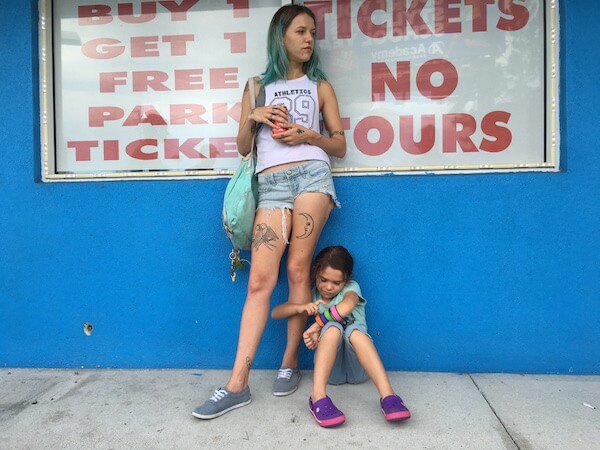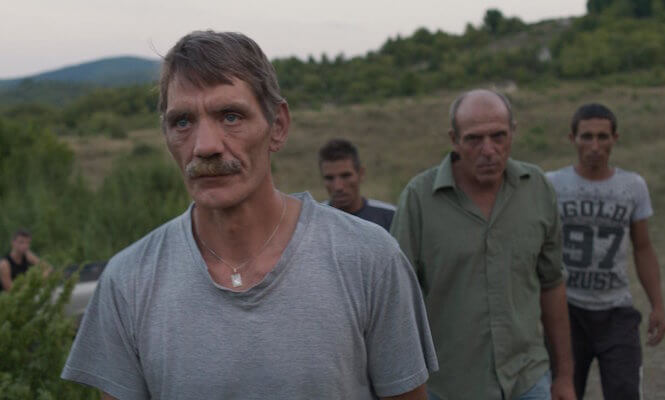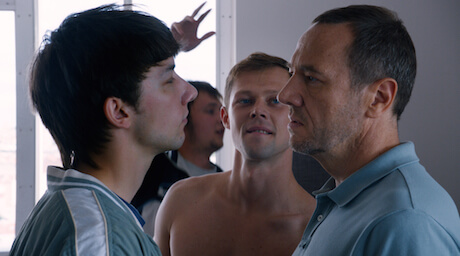Bria Vinaite and Brooklynn Prince in Sean Baker’s “The Florida Project,” which opens October 6 at the Angelika and at Lincoln Square. | A24
A PSA used to air on New York cable stations showing a child witnessing domestic violence and ending with the words, “If this were a movie, you wouldn’t let them watch it.” This came back to mind while seeing Sean Baker’s “The Florida Project,” a film essentially told from a poor six-year-old girl’s perspective that grows darker and darker.
Baker is well aware that a child might not understand how much danger her mother is in or how precarious her life is. He also sets “The Florida Project” in a world full of surface pleasures that mock their characters’ despair even as they offer temporary relief.
“The Florida Project” starts off seeming relatively harmless, telling the misadventures of young Moonee (Brooklynn Prince) and her two friends. She lives with her mother Halley (Bria Vinaite) in a hotel called the Magic Castle in Kissimmee, Florida. The hotel is managed by Bobby (Willem Dafoe), a relatively benevolent figure who spends his days and nights racing around solving minor problems. Halley drifts from job to job, not all of them legal, and struggles to keep putting food on the table and paying rent. Moonee seems unaware of this as she blithely relaxes and takes baths to hip-hop songs a six-year-old probably shouldn’t be listening to. If Bobby represents a decent version of authority, eventually Halley’s illegal activities catch up with her and Moonee faces a much more malign version.
Sean Baker follows “Tangerine” with a child’s take on the poverty engulfing her family
Baker shot his previous film, “Tangerine,” on an iPhone, and it looked great. For “The Florida Project,” he has moved up to 35mm, even though the movie will be distributed to theaters digitally. Cinematographer Alexis Zabe, who has shot videos for pop singer Pharrell and films for austere Mexican arthouse director Carlos Reygadas, does a great job of capturing the day-glo images of Disneyland’s environs. Someone refers to Moonee’s hotel as “the purple place,” and Zabe’s cinematography captures fine shades of difference between pink and purple. Artist Jeff Koons, known for his outlandish kitschy sculptures, could have worked as production designer; “The Florida Project” has a hyper-real quality that marks it as a descendant of Pop Art. Many of its images look like still photos that hopped off a gallery wall and have been brought to life.
At the same time, Jacques Tati’s “Playtime,” which was filmed on an incredibly detailed set teeming with life, seems like an influence, especially when Baker uses long shots of the hotel complex. Baker himself acknowledges “Our Gang” and “The Little Rascals” as inspirations.
If there’s a long-running agenda behind Baker’s work, it’s humanizing America’s underclass. This reaped him lots of kudos when “Tangerine” became a critical and, to a lesser extent, commercial success, especially because it cast transgender actresses as trans women, unlike TV shows like “Transparent” and movies like “The Danish Girl.” But more specifically, Baker is interested in nonjudgmental portraits of sex workers. His film “Starlet” depicts a young woman who performs in porn videos, but Baker devotes about 10 minutes of “Starlet” to that aspect of her life and most of the rest of the film to her friendship with an elderly woman. Given the way American culture treats all sex workers as pathetic victims who are probably drug addicts who were molested by their family members, “Starlet” is quite subversive in suggesting that the fact its heroine makes adult videos is far from the most notable thing about her.
Baker’s interest on that score continued in “Tangerine,” which reflected the reality that job discrimination forces 60 percent of trans women to become prostitutes at some point in their lives. Halley goes through a variety of legal and illegal hustles to support herself and Moonee, including stripping, selling drugs, prostitution, and con games. But if she’s a victim of anything, it’s poverty. She does put Moonee in the position of spending a lot of unsupervised time by herself, but nothing bad really comes of this. Moonee’s horror about the prospect of being separated from Halley seems to be shared by the film, as does her confidence in her independence, even at age six. Vinaite is a non-professional actress whom Baker approached on Instagram, but she meshes well with Dafoe, the only movie star with whom Baker’s ever worked.
The ending of “The Florida Project” may be both the most exhilarating and the most disturbing scene in it, though talking about exactly what it contains would be a spoiler. Let’s just say that the film’s ongoing ambivalence toward pop culture and its characters’ surroundings takes center stage here, without ever becoming a coherent statement. The film might be a masterpiece if it could figure out what it wanted to say about everything it depicts, but to its credit, the final scene hurtles toward nihilism and the mainstream simultaneously.
“The Florida Project” has a real possibility of breaking into pop culture itself; there’s been talk about whether an actress as young as Prince could get an Oscar nomination. If Baker ever enters Hollywood, I hope he’s able to brings his respect for America’s poor, including sex workers, with him instead of making superhero movies. “The Florida Project” is neo-realism for people who can appreciate both a Robert Rauschenberg exhibit and a Nicki Minaj video.
THE FLORIDA PROJECT | Directed by Sean Baker | A24 | Opens Oct. 6 | Angelika Film Center, 18 W. Houston St. at Mercer St.; anglikafilmcenter.com/nyc | AMC Loews Lincoln Square, 1998 Broadway at W. 68th St.; amctheatres.com




































